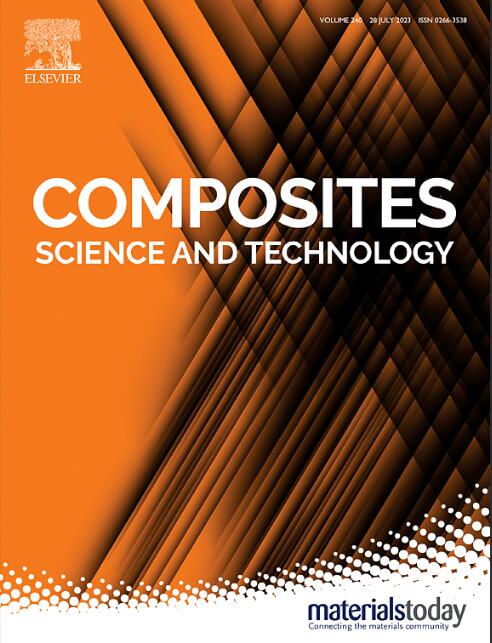Efficient property-oriented design of composite layups via controllable latent features using generative VAE
IF 8.3
1区 材料科学
Q1 MATERIALS SCIENCE, COMPOSITES
引用次数: 0
Abstract
Fiber-reinforced composites provide substantial tailoring potential, while the extensive parameters and complex coupling mechanisms pose formidable challenges to layup designs. This paper presents an efficient inverse design framework for composite layups utilizing a variational autoencoder (VAE), which is applicable to non-conventional laminates. By leveraging the VAE's exceptional feature extraction and generative capabilities, the decoder rapidly produces layups with desired properties through controllable feature vectors. Based on the stacking characteristics of layups, multi-scale one-dimensional convolutions precisely extract sequence features relevant to mechanical properties and specific manufacturing constraints. A customized loss function is formulated to constrain the latent features, while addressing the non-uniqueness problem for layups with certain mechanical properties. The developed property-oriented VAE can generate 100,000 layups in seconds, achieving an average success rate of 66.9 % under comprehensive in-plane and bending stiffness design, and remains effective for 100-ply thick laminate. For comparison, the VAE model outperforms the genetic algorithm and the logic-based method in reinforced panel designs, reducing the retrieval error by 46.4 % and 38.1 %, respectively. The proposed approach demonstrates flexible and efficient design advantages using generative machine learning models, and is easily extendable to other inverse design scenarios.

利用生成式 VAE,通过可控潜特征高效设计以属性为导向的复合材料铺层
纤维增强复合材料具有巨大的定制潜力,但其广泛的参数和复杂的耦合机制给铺层设计带来了严峻的挑战。本文介绍了一种利用变异自动编码器(VAE)进行复合材料层叠的高效反设计框架,该框架适用于非常规层压板。利用 VAE 卓越的特征提取和生成能力,解码器可通过可控特征向量快速生成具有所需特性的层叠结构。根据层叠的堆叠特性,多尺度一维卷积可精确提取与机械特性和特定制造约束相关的序列特征。制定了一个定制的损失函数来约束潜在特征,同时解决了具有特定机械性能的叠层的非唯一性问题。所开发的面向特性的 VAE 可在数秒内生成 100,000 个层叠,在全面的面内和弯曲刚度设计下,平均成功率达到 66.9%,并且对 100 层厚的层压板仍然有效。相比之下,VAE 模型在增强板设计中的表现优于遗传算法和基于逻辑的方法,检索误差分别减少了 46.4% 和 38.1%。所提出的方法利用生成式机器学习模型展示了灵活高效的设计优势,并可轻松扩展到其他逆向设计场景。
本文章由计算机程序翻译,如有差异,请以英文原文为准。
求助全文
约1分钟内获得全文
求助全文
来源期刊

Composites Science and Technology
工程技术-材料科学:复合
CiteScore
16.20
自引率
9.90%
发文量
611
审稿时长
33 days
期刊介绍:
Composites Science and Technology publishes refereed original articles on the fundamental and applied science of engineering composites. The focus of this journal is on polymeric matrix composites with reinforcements/fillers ranging from nano- to macro-scale. CSTE encourages manuscripts reporting unique, innovative contributions to the physics, chemistry, materials science and applied mechanics aspects of advanced composites.
Besides traditional fiber reinforced composites, novel composites with significant potential for engineering applications are encouraged.
 求助内容:
求助内容: 应助结果提醒方式:
应助结果提醒方式:


